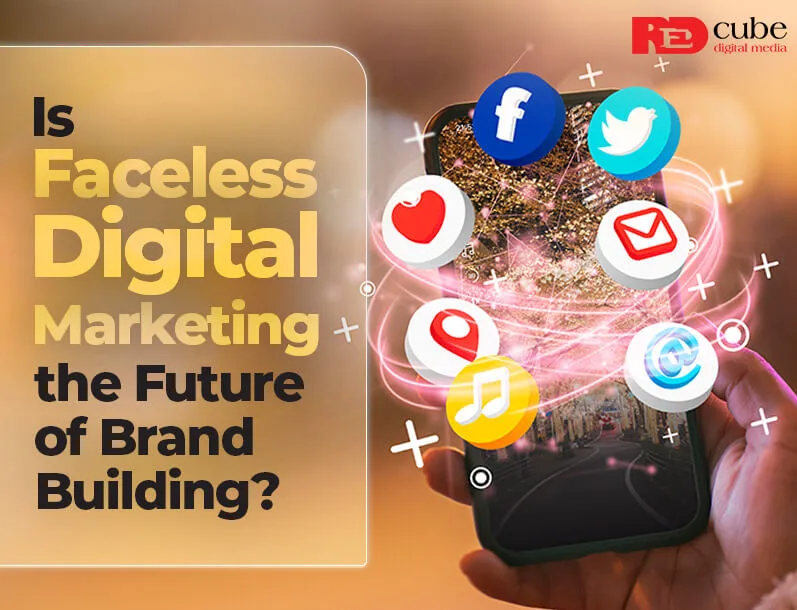Leaders in the business-to-business sales market are now following their consumers into the digital age. B2B marketing is rapidly innovating, and those who want to succeed need to let go of the age-old way of doing things. While the personal touch still matters, personalization at scale is the name of the game now.
eMarketer released a forecast that the B2B digital marketing space would be worth US $4.6bn in 2018, an increase of 13% over 2017 values. B2B businesses have reached the tipping point. consumer-facing businesses have already become used to, where they must adapt to working mostly through digital space or fail.
B2B Marketing Must Become Pull-Oriented
More than 75% of all B2B purchasers have very limited interaction with sales representatives. And that’s the way they like it! B2B purchasers expect the suppliers’ online profile (and particularly their website) to be a useful resource. About a third of purchasers expect the website to be the most helpful resource available to them. Moreover, the CMO Survey from 2016 found that B2B marketing budgets are fairly low, accounting for 6 to 9% of company revenues, return on investment for money in digital is higher typically than in any other form.
What this means is that the old ‘push’ form of selling is becoming less useful. Pushing sales involves trying to find customers who may be interested in your merchandise and ‘pushing’ yourself into their attention in order to make a sale. It’s sometimes an uncomfortable aggressive form of making sales and requires a lot of effort into generating leads, only a few of which will pan out. Digital marketing has its share of push marketing, like pop-up ads and web banner, but these are also considered intrusive and are rapidly becoming obsolete.
A more suitable modern business plan is to develop an online presence and marketing scheme that would attract suitable purchasing businesses. A 2016 survey by Sacunas found that B2B buyers are increasingly Millennials, natives of the digital world, who have already been identified to be critical to traditional push tactics. The survey found, predictably, that market researchers would not only study vendors’ websites to learn about products, they were equally likely to research the vendor and check social media for brand content that feels authentic.
The tactic here is to produce leads who are already interested by the time the face-to-face interaction part of the sales cycle comes around.
Sales and Marketing Team-Up: For Lead Development and Demand Generation
Unlike consumer marketers, B2B marketing has a paucity of the data that can let them identify potential customers and use tools to identify where they are in the buying process. Until this data is available, the personalization that allows B2C marketing to reach out with information to customers at the right time is yet to be explored for B2B marketing.
The good news is that the tools are getting in place for marketing and sales to work together to produce measurable results. Integrating customer relations management software, developing common performance indicators and developing a common platform to work on generating clients and sales so that the same information is available to everyone, is absolutely vital.
One particular example that is gaining traction is Accounts-Based Marketing (ABM), which can be integrated into models of selling digitally. Many companies are now outsourcing the work to digital marketing management companies because handling the complex databases is more costly in-house.
Innovation In B2B Marketing
B2B marketing can use the lessons and the software from consumer-facing businesses but requires an innovative approach to marketing. Digital marketing in B2B requires innovations and consultative selling based on the client’s needs. The (potential) client base is usually small, particularly compared to B2C businesses where potential consumers may number in the millions. The products are usually much more expensive, and building a recurring client base is vital.
Developing the right data connections and refining them is vital, as B2B companies do not yet have the data to reliably tell them where to focus their efforts. Innovations in video explainers, infographics, and other related marketing techniques are slowly coming into play, but other useful techniques like website personalization, marketing automation, and influencer marketing have gained little traction in the B2B marketing campaigns.
The Importance Of The Use Of Marketing Automation
Like B2C marketing automation, the goal of B2B marketing automation is to generate revenue, but the marketing process is very different. Where B2C marketing will focus on building a brand, B2B marketing teams need to focus most of their attention on generating leads and nurturing them.
Marketing automation is basically handing over the repetitive but important job of pulling in customers to software which can crunch the data much faster than you and will not get bored going through the same motions of ‘send this email to anyone who has clicked subscribe’ for the tenth or even hundredth time.
Programmatic ad buying is an example of personalisation at scale, which is a useful tactic for B2B marketing campaigns who have already begun to integrate ABM into their marketing tactics. It is possible because of automation. Even in Business-to-business transactions, the client demands personal attention. Now you can send the right content at the right time, because of data gained through your software.
Once you have an idea of what your key performance indicators (KPIs) are, you can plug them into the software managing your ads, which will use them to direct ads towards customers most likely to convert, and offers you the numbers back, on how many impressions are created and the audiences behind them. Programmatic ads become even more useful after a while because the data builds up to create a better system and it can target potential clients better and prompt sales teams to approach clients at the right time to create a rapport.
Using Digital Marketing Methods For B2B Marketing
Digital marketing methods that are valuable for B2B marketers are becoming more widely used and discussed. Any useful digital marketing strategy needs to take the basics into account while creating a digital marketing strategy. ABM is useful to generate leads and keep track of the larger goals of the campaign.
ABM or accounts-based marketing is becoming popular for good reason. ABM’s USP is creating engagement early on in the sales cycle.ABM allows marketing and sales teams to optimise budgets by setting overall objectives, as well as account-specific goals and measure outcomes accurately; and gathering data from multiple sources for such work.Previously, B2B digital marketing had the highest impact in relatively low-value and high frequency purchases but ABM and other tools will allow marketing teams to manage larger and more complicated accounts.
The human element is important in selling anything, and now it’s possible to put in the human element through the right combination of software and planning.Predictive analytics allows B2B marketers to draw in clients through a combination of identifying the right profile of clients and catching them at a point where they are receptive and in need of your product or services. Content automation marketing uses predictive analytics to present the full content experience of the business but does it strategically so it attracts instead of annoys.
The Importance Of Brand Relatability
B2C marketing has already learned to its cost that aggressively putting their ads everywhere is not a suitable tactic anymore. In fact it may backfire. Millennial and younger demographics in particular will zone out as soon as they feel they’re being targeted by an ad. B2B marketing schemes are learning the same.
Making your brand available is vital of course. Mobile first design is everywhere and more and more B2B purchasers are using mobile searches as a beginning in finding sellers. Social media pages, webpages, and all other online presence need to be optimised for user experience on desktops as well as mobiles. But the key takeaway is the importance of authenticity.
Brands which demonstrate transparency and engagement with their customers are more likely to succeed. Employee and executive advocacy on social media is important for making a brand relatable and building trust with customers.
Small companies are outsourcing the work because it is difficult to get a full team in-house with all the skills required, but not doing the work might spell the end of your company. Buyers are increasingly choosing to engage online and turning away from solely brick-and-mortar suppliers whose reviews and brand presence they cannot get online.
Other Upcoming Trends In B2B Marketing
Even as businesses are slowly waking up to the importance of managing their web presence and using ABM techniques, new technology is changing the platform.
Where data science and genuine content continues to grow, marketing technology is growing beyond marketing automation to new fields. New interfaces like voice, VR tech are also reaching maturity, and will soon become part of regular digital marketing campaigns. Marketing executives also have to be more accountable for return on investment expectations that haven’t been met in the past.
One thing that will not change is the demand for customer experience driven marketing development. In any sort of marketing campaign, the customer has to be centred.
Creating a digital marketing strategy for B2B isn’t easy, but it is necessary. More and more companies are shifting too slowly and finding that early movers are rewarded and they themselves are being left behind. A digital marketing strategy should be a chief pillar of your selling strategy, and not an afterthought.
Lsi: business-to-business sales market, b2b purchasers, digital marketing strategy, Upcoming Trends In B2B Marketing, B2B marketing automation, Accounts-Based Marketing, Predictive analytics allows B2B marketers to draw in clients, digital marketing strategy for B2B, Mobile first design.



